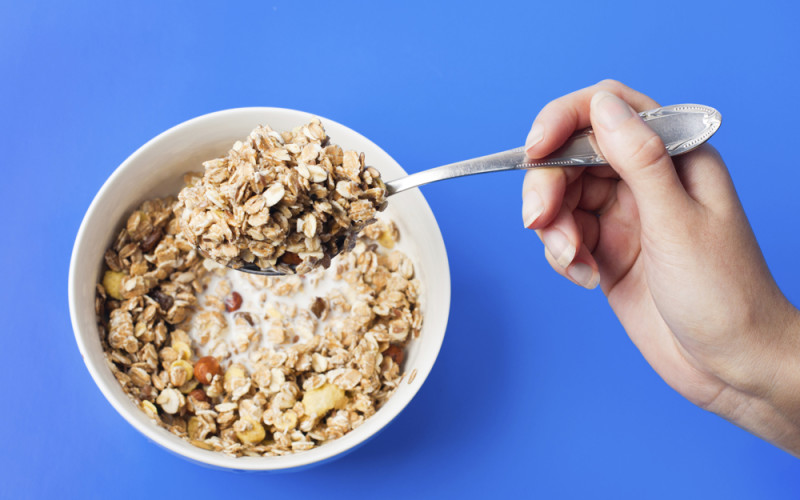You should probably be eating more fiber

We all know from TV commercials, cereal-box labels and snack ads that fiber is something important to have in our diet. But what, exactly, is fiber? And how much of it do we really need?
Fiber is the naturally occurring material in food that is not digested — often referred to as roughage or bulk. The recommended daily allowance of fiber is 25–35 grams a day. Most Americans only eat about half of the recommended intake.
A high-fiber diet:
- May reduce the risk of certain cancer and heart disease.
- Prevents constipation.
- Helps lower blood cholesterol levels and control blood sugar levels with diabetes.
- Helps to control food intake by promoting a feeling of fullness at meals.
So how do we eat more fiber? By choosing high-fiber foods like fruit, vegetables, whole grains, legumes (beans), nuts and seeds. If your fiber intake is low to start, add in high-fiber foods slowly. And drink plenty of water.
Low-fiber vs High-fiber Meal Plan
High-Fiber Diet
| Meal | Food | Grams of Fiber |
|---|---|---|
| Breakfast |
|
8g |
| Snack |
|
5.5g |
| Lunch |
|
10.25g |
| Snack |
|
4g |
| Dinner |
|
10.25g |
| Snack |
|
0g |
| TOTAL: 1800 CALORIES, 38 GRAMS OF FIBER | ||
Low-Fiber Diet
| Meal | Food | Grams of Fiber |
|---|---|---|
| Breakfast |
|
3g |
| Snack |
|
2g |
| Lunch |
|
2g |
| Snack |
|
3g |
| Dinner |
|
5g |
| Snack |
|
0g |
| TOTAL: 1800 CALORIES, 15 GRAMS OF FIBER | ||
Some practical tips:
- Choose fresh or frozen fruit and vegetables instead of canned fruit and vegetables.
- Choose whole grains – whole wheat bread, brown rice, whole wheat pasta, oatmeal.
- Incorporate beans at meals – black beans, kidney beans, garbanzo beans.
- Consume 5-10 servings of fruit and vegetables a day.
- Include small amounts (1/4 to 1/3 cup) of nuts each day.
You can go to www.calorieking.com to look up the fiber content of individual foods.